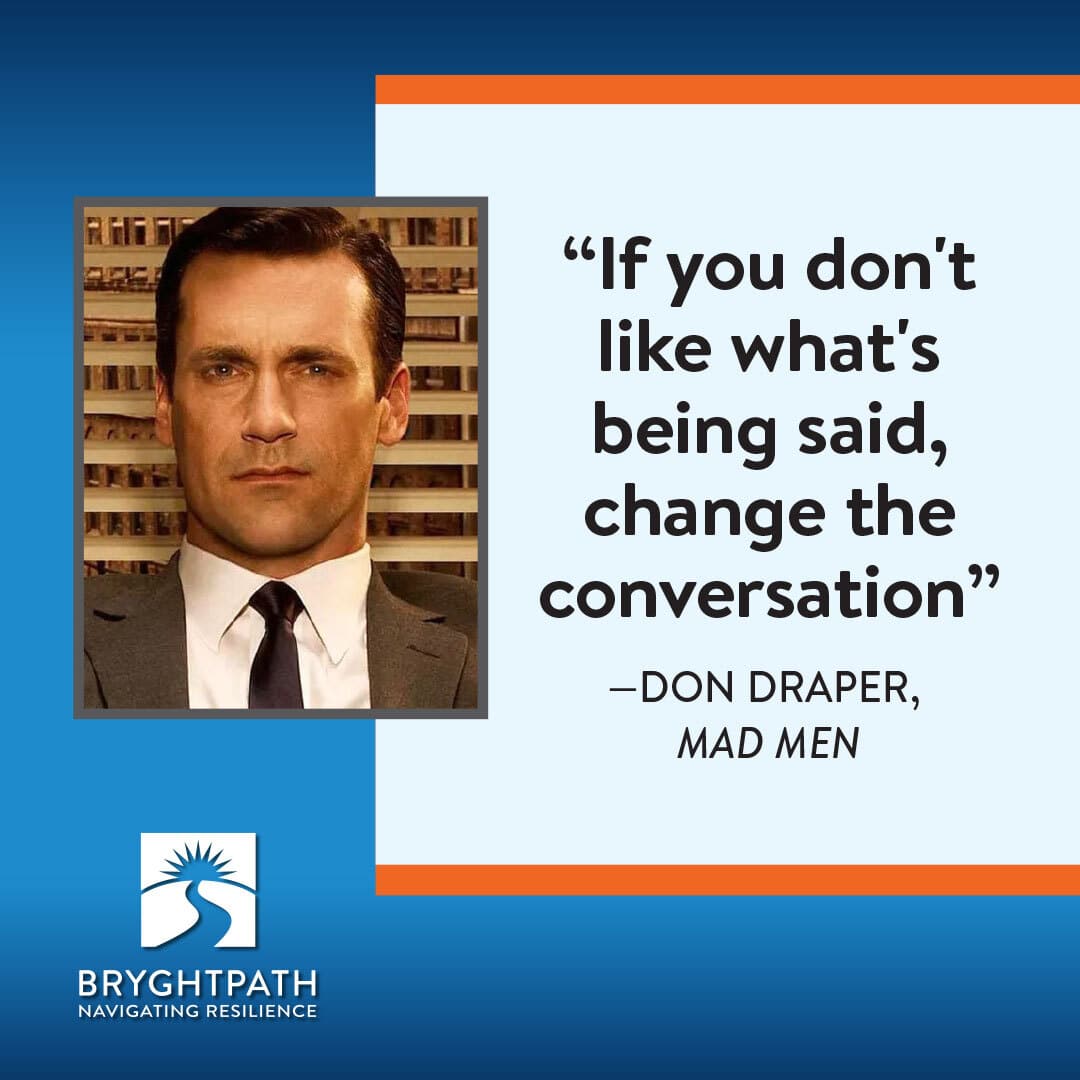I’m not known for giving advice with an extra helping of sugar- just ask my family. So when clients come to us for help because their business continuity program is stuck, my answer is usually one of three things.
- Your business continuity program is misaligned with your business’s objectives
- Business continuity is just one of many responsibilities into which you were probably thrown largely unprepared and you have zero ideas where to start
- You’re the reason it’s stuck
Or sometimes, it’s a combination of some or all of these.
Fortunately, we specialize in helping out in all of these situations (although for the latter of the three, it usually helps if you come to us with a very open mind).
Here’s our process for getting to the bottom of the problem and a few of the most common tactics that we use to help our clients get their program unstuck.
Start With a Resiliency Diagnosis
Your dentist doesn’t start drilling your teeth before a thorough exam and imaging (and if they do, it might be time to find a new one). Nor should you start blowing things up when your business continuity program is stuck without first having a thorough understanding of how your program and capabilities stack up. You need to know where your program stands before you can intelligently design a plan to improve and mature it.
When we go through the resiliency diagnosis process with our clients, one of the first things we do is talk to the organization’s key stakeholders.
- What are their strategic objectives for the year? Three years? Five years?
- What challenges are they currently facing?
- What are their most important initiatives?
- What’s their perception of the business continuity team—are you a trusted partner with whom they are excited to speak or do you fall into the category of “Ugh. Business continuity wants to talk to us again.”
- What’s their understanding of what business continuity really means and the work that you do?
- What kinds of disruption concerns keep them up at night, and are those being adequately addressed within the organization?
If there is a constant critic of your program, they are probably the first ones you should approach for feedback. I know that’s not a crowdpleaser for those who are conflict adverse. But there is almost always some element of truth to what’s bothering them.
Above all, listen with an open mind. In even the worst situations, there’s probably some element of truth that will point you toward your next best steps in finding and addressing the misalignments in your program.
3 Tactics to Help You When Your Business Continuity Program is Stuck
1. Rewrite your business continuity story
One problem we often see is that business continuity teams get stuck in business continuity speak. They throw around terminology like BIAs, RPOs, and RTOs, which makes the business continuity outsiders in your organization feel just like that; outsiders looking into your business continuity secret society. If you want to gain traction for your business continuity program, you have to explain the value of your program in terms that resonate with all of your stakeholders. Bring them into the narrative so it becomes one they actually want to be a part of.
After you conduct your stakeholder interviews, certain themes will likely start to emerge about how your program is perceived in the organization and the gaps that need to be bridged to change that perception. This is your opportunity to reconstruct the narrative around business continuity within your organization. To rethink your “why,” “how,” and “what’s next” in a way that endears your business continuity function as a valuable and trusted partner rather than a roadblock.
Your business continuity “story” should include important things, like:
- A bit about how and why your business continuity program was started
- Your mission
- How do your program objectives support your organization’s strategic initiatives
- The key components of your program and how they operate on a granular level to accomplish those objectives
- Your organization’s current challenges and what your team is doing to respond to those challenges
Most importantly, you should take every opportunity to tell your business continuity story among your stakeholders. It takes time and repetition to create a culture of resilience. Knowing and telling your story often is a good way to start.
2. Simplify
It’s probably an understatement to say that in our current crisis climate, people have never been more exhausted from dealing with disruption. The term that we use to describe it is “crisis fatigue.” But while everyone understandably wants and needs a break, future crises inevitably await our response. That’s why business continuity and crisis management activities must be designed to add maximum value to resilience efforts in the least taxing way possible.
In addition, the pandemic-fueled work-from-home shift has irreparably changed the landscape around our dependencies. For many, business continuity has gotten much simpler because we are less reliant upon real estate and physical facilities. But not all business continuity and crisis management programs have been kept in step by adjusting their approach. The result is wasted efforts and squandering what little goodwill you have among your stakeholders on activities that don’t move the needle in your program.
Organizations should regularly take stock of their resilience inputs and adjust their processes, planning, and training as appropriate. Where can you simplify things to lessen the burden on your stakeholders and increase the value you add to their part of the business while still achieving your mission?
3. Leverage the governance process
Suppose you think business continuity governance is just another meaningless exercise in bureaucratic box-checking. In that case, you’re likely overlooking one of the most powerful levers you can pull to get traction with your business continuity program finally. Having an executive sponsor who champions your cause within the organization, along with an effective and engaged steering committee, is critical if you want to move your business continuity program forward effectively.
In addition to having direct oversight of your program and usually acting as chair of your steering committee, your executive sponsor should be your program’s top advocate and overcomer of obstacles and objections. Your steering committee—a thoughtfully curated team of six to eight diverse stakeholders–-acts as the primary governance body for your resilience program. The steering committee should meet at least quarterly, if not monthly. This is the space to discuss program challenges, review alignment with key departmental and company objectives, and ensure that your program is securing buy-in among the organization’s stakeholders.
An effective governance program—and the right reporting metrics to inform and empower your executive sponsor and steering committee—is one of the first things to address if your resilience efforts are stagnating or encountering specific obstacles.
Want to work with us or learn more about Business Continuity?
- Our proprietary Resiliency Diagnosis process is the perfect way to advance your business continuity program. Our thorough standards-based review culminates in a full report, maturity model scoring, and a clear set of recommendations for improvement.
- Our Business Continuity services help you rapidly grow and mature your program to ensure your organization is prepared for the storms that lie ahead.
- Our Ultimate Guide to Business Continuity contains everything you need to know about Business Continuity.
- Our free Business Continuity 101 Introductory Course may help you with an introduction to the world of business continuity – and help prepare your organization for your next disruption.
- Learn about our Free Resources, including articles, a resource library, white papers, reports, free introductory courses, webinars, and more.
- Learn more about our healthcare industry experience
- Set up an initial call with us to chat further about how we might be able to work together.



 Building your Ransomware Playbook
Building your Ransomware Playbook